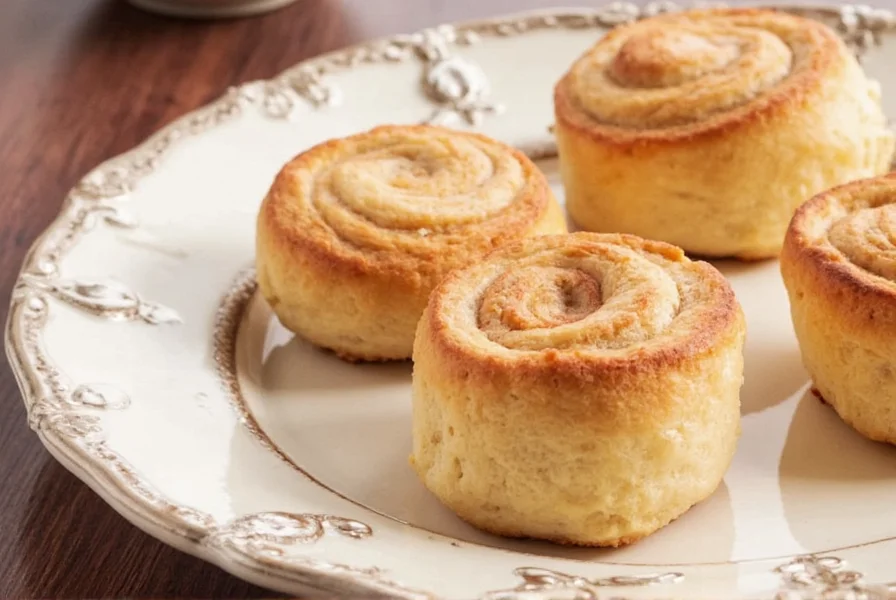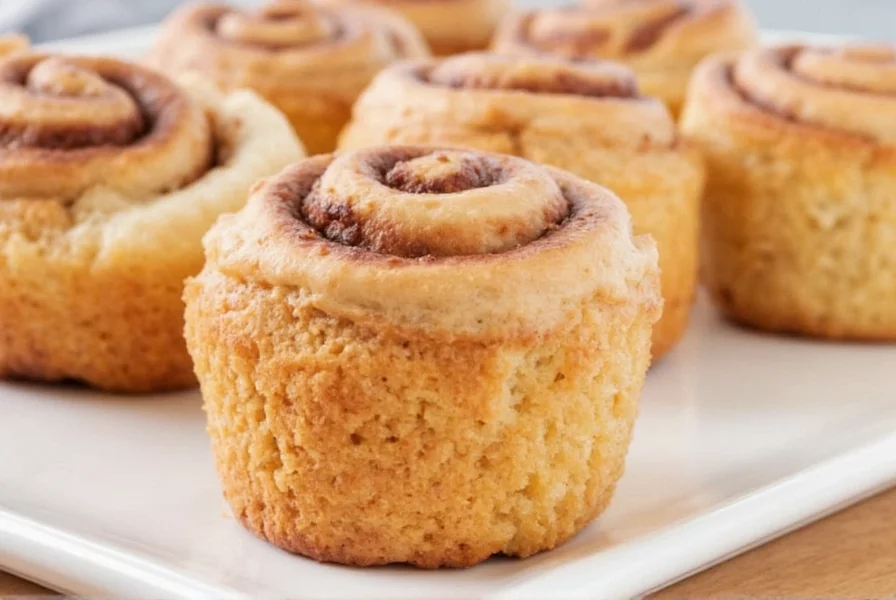The most reliable method to prepare Pillsbury cinnamon rolls involves preheating your oven to 375°F (190°C), arranging the 5 rolls in a greased 9-inch round pan with space between them, and baking for 13-17 minutes until golden brown. After cooling for 5 minutes, spread the included icing evenly over the warm rolls for optimal texture and flavor absorption.
When you reach for that familiar tube of cinnamon roll pillsbury dough, you're tapping into a baking tradition that's simplified morning treats for generations. These convenient pre-portioned rolls deliver consistent results when prepared correctly, but many home bakers miss subtle techniques that transform good rolls into exceptional ones. Understanding the science behind the rise, bake, and icing application makes all the difference in your final product.
Complete Preparation Guide for Perfect Results
While the basic how to make pillsbury cinnamon rolls process seems straightforward, precise execution ensures bakery-quality results every time. Follow these detailed steps for flawless cinnamon rolls:
- Preparation: Remove rolls from packaging and separate carefully. Place in a greased 9-inch round pan with adequate space between rolls to allow for expansion during rising and baking.
- Rising: Let rolls stand at room temperature for 20-30 minutes before baking. This crucial step activates the yeast for optimal rise without over-proofing.
- Baking: Bake at 375°F (190°C) for 13-17 minutes. The exact time depends on your oven's calibration and altitude. Rolls are done when golden brown and internal temperature reaches 190°F.
- Icing Application: Wait exactly 5 minutes after removing from oven before spreading icing. This allows surface temperature to drop slightly while maintaining warmth that helps icing melt perfectly into the rolls.
| Common Issue | Prevention Method | Correction |
|---|---|---|
| Dense texture | Avoid over-rising before baking | Reduce rising time by 5-10 minutes |
| Burnt bottoms | Use light-colored metal pan | Place pan on middle oven rack |
| Icing doesn't melt | Wait precise 5 minutes after baking | Microwave rolls briefly before icing |
| Uneven rise | Space rolls evenly in pan | Rotate pan halfway through baking |
Advanced Techniques for Elevated Results
Mastering the pillsbury cinnamon roll instructions opens opportunities for creative variations that maintain convenience while enhancing flavor. Professional bakers employ these tested methods:
- Temperature Control: For chewier texture, bake at 350°F (175°C) for 18-20 minutes. This slower bake develops more complex flavors.
- Flavor Infusion: Before baking, brush rolls with melted butter mixed with 1/4 teaspoon of cardamom for Scandinavian-inspired depth.
- Crispy Bottoms: Sprinkle 1 teaspoon of coarse sugar in the bottom of the pan before placing rolls for caramelized texture.
- Layered Flavor: After separating rolls, sprinkle additional cinnamon-sugar mixture between the layers before placing in pan.
Troubleshooting Common Problems
Even experienced bakers encounter issues with pillsbury cinnamon roll baking time and results. Understanding these common problems ensures consistent success:
Why Didn't My Rolls Rise Properly?
Inadequate rising typically stems from one of three causes: expired dough (check tube expiration date), insufficient rising time (minimum 20 minutes required), or cold kitchen environment (below 70°F/21°C). For optimal rise, place pan in oven with light on but heat off for 25 minutes.
How to Prevent Burnt Edges?
Dark pans conduct heat more efficiently, causing edges to over-brown. Use a light-colored metal pan and position oven rack in the center. For convection ovens, reduce temperature by 25°F and check 3 minutes early.
Storage and Reheating Best Practices
Proper storage maintains freshness while preserving texture. Store cooled rolls in airtight container at room temperature for up to 2 days. For longer storage, freeze individually wrapped rolls for up to 3 months. Reheat in microwave for 15 seconds or conventional oven at 300°F for 8 minutes for restaurant-quality results.

Pillsbury vs. Homemade: Understanding the Differences
While pillsbury cinnamon roll recipe variations can enhance convenience products, understanding their fundamental differences helps set realistic expectations. Commercial dough contains dough conditioners and preservatives that create consistent texture but lack the complex flavor development of yeast-risen homemade versions. The trade-off is time versus depth of flavor - Pillsbury delivers reliable results in 45 minutes versus 3+ hours for traditional recipes.
For those seeking middle ground, try incorporating one homemade element: replace the included icing with a cream cheese version (4 oz cream cheese, 1/4 cup butter, 1 cup powdered sugar, 1/2 tsp vanilla) for elevated flavor without sacrificing convenience.
Expert Tips for Consistent Success
Professional pastry chefs recommend these evidence-based techniques for perfect pillsbury cinnamon roll variations:
- Always use the specified pan size - smaller pans cause overcrowding while larger pans create uneven baking
- Check oven temperature with independent thermometer - most home ovens have 25°F+ calibration errors
- For crispier tops, broil for final 30 seconds (watch carefully to prevent burning)
- Double the included icing by adding 2 tablespoons milk for restaurant-style generous coverage











 浙公网安备
33010002000092号
浙公网安备
33010002000092号 浙B2-20120091-4
浙B2-20120091-4